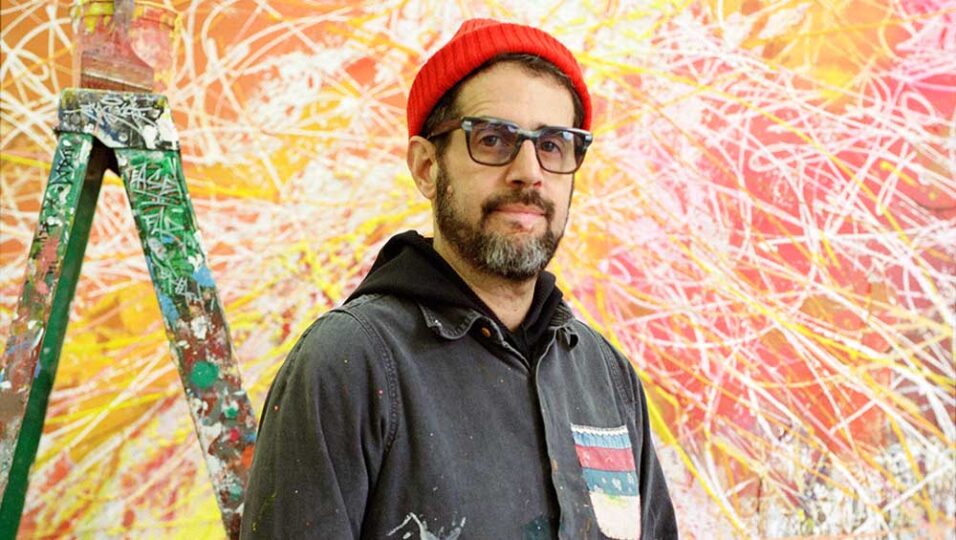30/10/23
Interview with José Parlá
The past few years have been something of a rollercoaster for the Bronx-based Cuban artist José Parlá (b1973, Miami). After falling ill with Covid, he became so unwell that he was rushed to hospital and put into an induced coma for four months. On coming round, the “reality” of his dreams had taken over from his actual reality. The whole experience, including his rehabilitation period, during which his hospital room was turned into a mini studio, with paper on the walls and Cuban music coming from his record player, fed into several series of work, of which Phosphene, now on show at Ben Brown Fine Arts in London, is the culmination.

The term “phosphene” – derived from the Greek phōs (light) + phainein (to show) – refers to the visual phenomenon that gives the impression of seeing light when your eyes are closed. These flashes of colour, dots, swirls and shapes take form on Parlá’s canvases, the result of a coming together of mind, body and breath. His work has always derived from writing and language, and Parlá, once a competitive breakdancer, is embedded in New York’s hip-hop and street-art culture, which he understands to be descended from a melting pot of African and Caribbean traditions. Just as these strands of his work bring together high and low forms of culture, so is the idea of phosphenes, as Parlá puts it, an “equaliser” – something everyone experiences and can relate to, no matter who they are or where they are from. The making of Parlá’s immersive series is a whole-body process for the artist, and they are certainly to be experienced “in the flesh” by the viewer, who, bathing in their phosphorescence, infuses the artistic mix with as much of their own radiating colour and personal story as they absorb and take away in their newly created memories.
Read the full interview here